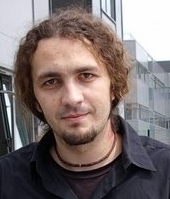research interests
- intensive signal processing, multidimensional specification, computational models
- embedded systems, codesign, model driven engineering (MDE)
- high-level optimizations, data parallelism
- computer architecture, system design, validation, verification
- synchronous languages, time models, time constraints
PhD topic: Optimizations for systematic and intensive signal processing applications on System-on-Chip


Computation intensive multidimensional applications are predominant in several application domains such
as image and video processing or detection systems (radar, sonar). Multidimensional means that they
manipulate primarily multidimensional data structures such as arrays. For example, a video is a 3D object
with two spatial dimensions and one temporal dimension. To facilitate the design of such applications, we
proposed a multidimensional specification formalism. The developer of the algorithm directly manipulates the data
arrays without worrying about their representation memory. To allow the optimization needed for such
applications, we proposed a toolbox for code transformation. These transformations propose in a
multidimensional context a range of tools similar to the usual loop transformations.
One of the goals of the thesis is to propose heuristics for enchaining these transformations in order
to allow a placement and an efficient scheduling of an application on a distributed architecture which
includes parallel execution units.
Array-OL (Array Oriented Language) is a mixed graphical-textual language for manipulating multi-dimensional data structures
that aims in expressing maximum of parallelism available in an application. The language is fully compatible
with MARTE OMG Standard (Repetitive Structure Modeling package). Array-OL
specification language is designed to provide ways to specify multidimensional data accesses without
compromising the usability of the language and if possible provide a way to statically schedule these
applications on parallel hardware platforms. During the thesis, we worked also on extending the expressiveness
of the language by adding support for uniform inter-repetition dependences and to integrate this extension
into Gaspard2 framework.
projects
- Participation to the Ter@ops project
